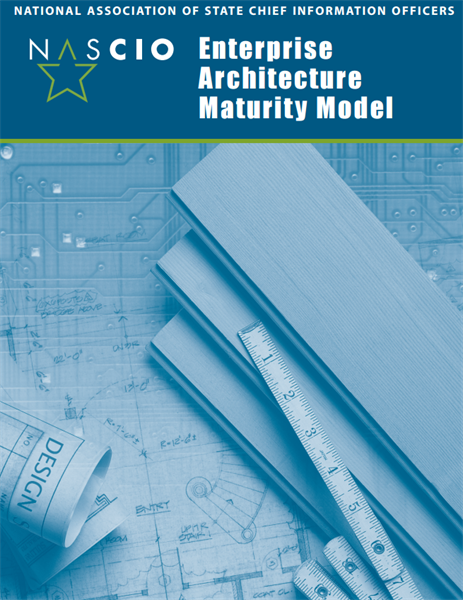
Enterprise Architecture Maturity Model
An adaptive, dynamic enterprise architecture enables the enterprise to change and manage the complexities inherent in large government enterprise. Enterprise architecture brings an operating discipline to the organization and prescribes the necessary traceability from strategic intent to the capabilities that enable that intent. These capabilities include both business and technology components. Enterprise architecture doesn’t happen at once. It is an iterative, maturing discipline that provides management the operating discipline for organizing and engaging business and technology components to fulfill the mission of the organization. This maturity model provides a scale or metric for understanding where the organization is in its evolving discipline, and what steps are required to take it to the next level of maturity.
The NASCIO Enterprise Architecture Maturity Model provides a path for architecture and procedural improvements within an organization. As the architecture matures, predictability, process controls and effectiveness also increase. Development of the enterprise architecture is critical because it provides the rules and definition necessary for the integration of information and services at the design level across agency boundaries. Enterprise architecture includes business processes and representations, and supportive technology components. At its fullest maturity, enterprise architecture becomes an inter-enterprise concept and prescribes the infrastructure for inter-enterprise business processes and provides the design for allowing data to flow from agency to agency, just as water flows through the pipes and electricity flows through the wiring of a well planned home.






